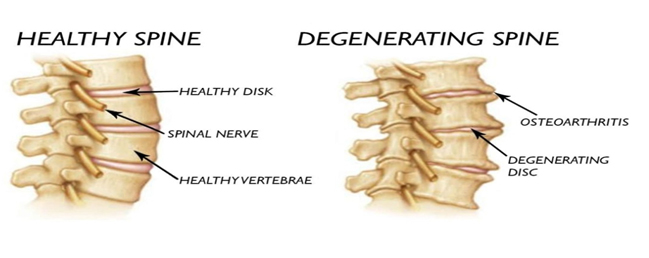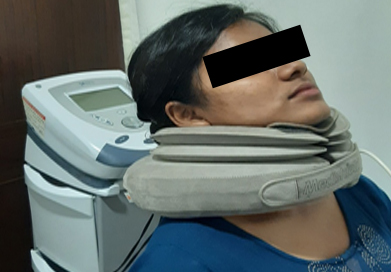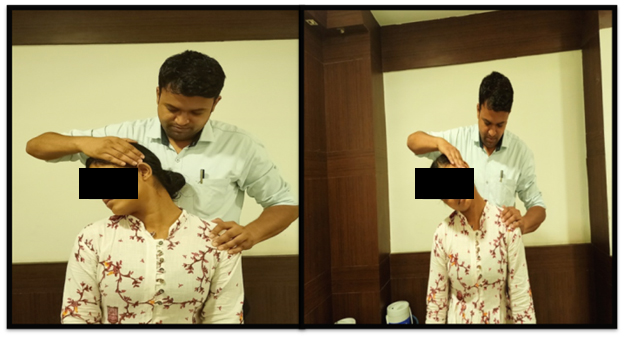Cervical spondylosis is a common condition that affects the joints and discs in cervical spine, which is in neck area. It develops from the wear and tear of the cervical discs. The problem results in narrowing the space for disc between the adjacent cervical vertebrae. The primary cause of cervical spondylosis is degeneration.
MORE THAN 10 MILLION PEOPLE ARE AFFECTED PER YEAR IN INDIA.
- 25% Of adults under the age of 40
- 50% of adults over the age of 40
- 85% of adults over the age of 60
70% of women and 95% of men at the age of 65 and 60 were affected. The most common evidence of degeneration is found at C5-6 followed by C6-7 and C4-5.
Compare between healthy and degenerative cervical spine

CAUSES OF CERVICAL SPONDYLOSIS?
- DEHYDRATED SPINAL DISCS:
Spinal bones have discs between two adjacent bones. Which are thick, padlike cushions that absorb the shock. The discs can dry out over time and become thin (reduced disc space). This causes bones rub together, which can be painful.
- OVER GROWTH OF BONE:
Bone spur or overgrowth of bone is one of the cause of cervical spondylosis. The extra bone can press on delicate areas of the spine which can causes pain.
- HERNIATED DISCS:
Herniation of cervical discs is most common because movement of neck takes place here. When the disc herniated, it compress the nerve root resulting in symptoms such as arm numbness as well as pain that radiates down in the arm.
- STIFFNESS OVER TIME:
The tough cords that connect spinal bones to each other become stiff over the time and muscles around the neck area also become stiff and weak which affects neck movement which is responsible for pain in the neck.
- OVERUSE:
Some occupations in which repetitive movements of neck and holding neck in one position is also responsible postural neck pain. Example- computer professionals and excessive mobile phone users.
SYMPTOMS OF CERVICAL SPONDYLOSIS?
Sometimes cervical spondylosis causes no symptoms. Whenever symptoms occur, it includes:
- Neck stiffness and pain
- Radiating pain downs in the shoulder and arm.
- Headache that may originate in the neck
- Compromised head and neck movements.
- Difficulty in walking
- Lack of coordination
- Grinding sensation on turning of neck
PHYSIOTHERAPY TREATMENT OF CERVICAL SPONDYLOSIS:
People suffering from cervical spondylosis are responds well with physiotherapy treatment. Physiotherapy treatment focus on providing pain relief, correcting the posture, preventing from the permanent damage and helping back to normal life.
Physiotherapy treatment includes
Pain management
- HOT OR ICE PACK: hot or ice packs will help to reduce inflammation and muscle spasm.
- TENS THERAPY: TENS therapy works on pain gate theory that’s why it is very effective in radiating pain.
- ULTRASONIC THERAPY: it is also helps to reduce pain and inflammation.
Manual therapy
- TRACTION THERAPY:
It is very useful in cervical spondylosis treatment . Cervical traction pulls head away from neck to create expansion between the spinal bones, so that discs pull back and reduce the compression from the nerve root.

- STRENGTHENING EXERCISE:
Weak muscles of cervical spine and upper back muscle leads to head sags forward and increased stress on cervical spine which aggravates the symptoms of cervical spondylosis.
Strengthening exercise helps to regain the muscle power and improve neck posture which helps to decrease pressure from cervical spine, which helps to reduce the symptoms of cervical spondylosis.

- STRETCHING EXERCISE
Due to muscle tightness of neck region, it puts extra pressure on cervical spine, that aggravates symptoms of cervical spondylosis.
Stretching exercise play an important role to reduce the symptoms of cervical spondylosis and it is also helpful to correct the neck posture.




